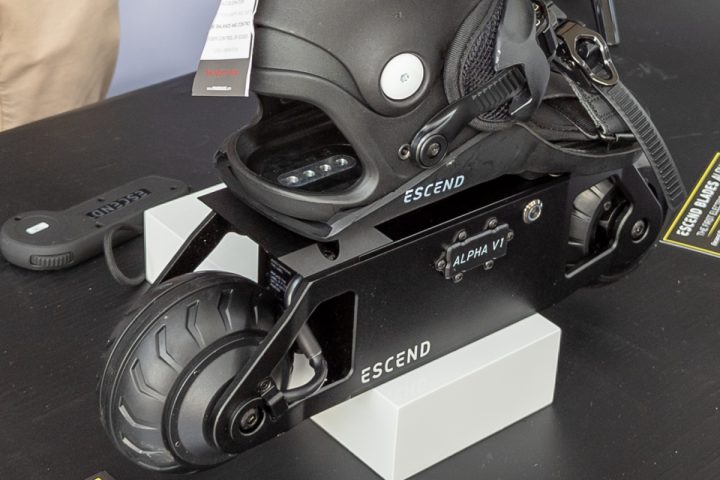
Drivers sue Tesla for alleged false advertising of Autopilot and FSD software
September 19, 2022
Samsung aims to make global operations and products carbon neutral by 2050
September 20, 2022
Escend is a U.K.-based startup that must have figured that scooters were too big, instead deciding to shrink micromobility even further (what are we calling this — picomobility?), adding a battery pack and motors to rollerblades. The company started selling its ‘blades today.
The blades use regenerative braking, and have been designed to last; between a sturdy-looking chassis and a modular design that lets users easily repair or replace any broken parts, they should be ready to zip you from place to place for years to come.
The skates feature 4-inch (105mm) diameter shock-absorbing tires that look as if they’ll deal with most surfaces with great aplomb. Good thing, too, because with a range of about 10 miles, a top speed of 16 mph and two 400-watt motors, you’re going to be shredding some pavement, and, if you are feeling brave, some light off-roading too. The front and rear wheels use the same tires.
The company is working with Powerslide for the boot and skate designs. The skate platforms themselves cost $830, and the skates can be configured with boots or so-called “doop boots,” where you can keep wearing your trainers and strap the skates on top.
To control the action, you have a remote control that includes a thumb throttle for acceleration and braking. The skates have three selectable modes for speed, and you can switch it to “reverse mode.” In my case, switching to reverse is a strong indication I’ve completely given up on my 40-year “staying alive” streak, but if you’re feeling stunt-y, perhaps you can think of a good use for flying backwards at 16 mph. The remote has a vibration motor to give you a heads-up when you’re running low on battery in the skates. Clever.
For a mere $886 (why not just charge $888?!) they can be yours. Good luck, and try to stay upright.
Escend is bringing neck-breaking micromobility to your feet by Haje Jan Kamps originally published on TechCrunch



